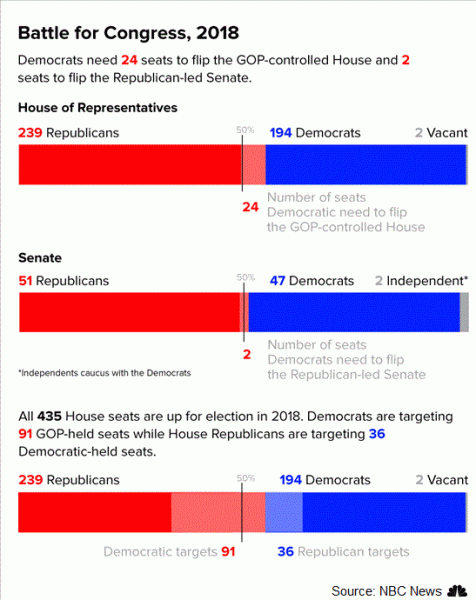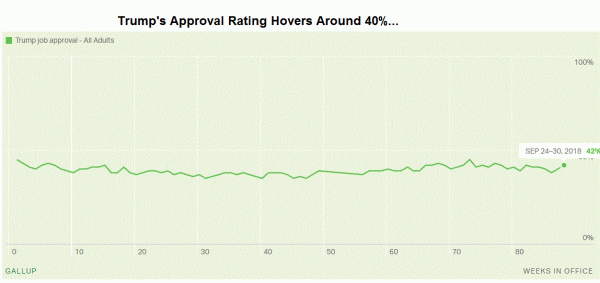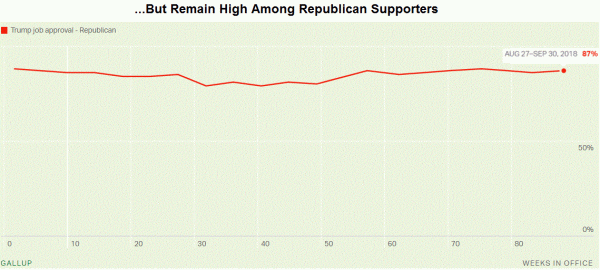Opinion polls suggest that the upcoming US midterm elections, scheduled on November 6, would lead to a split Congress – Democrat regaining control of the House and Republic retaining majority of the Senate. Such outcome could lead to political gridlock and more vigilant oversight of Trump’s administration. Yet, the most Democrats can do is delaying the legislative process. They would unlikely be able to repeal the bills passed, let alone successfully impeach the President.
In the past, financial market volatility usually increases prior to the election day but fades as the elections end. It would likely be similar this time. Market concerns mainly focus on the election outcome’s impact on fiscal stimulus, trade war and sustainability of Trump’s presidency.
Fiscal Stimulus
Fiscal stimulus and trade would continue to be Trump’s major policy thrusts in his second term. Politicians are looking beyond the midterm to 2020 presidential run. With both Trump and Republicans hoping to extend the economic expansion beyond 2020, they are looking to implement further tax reform. The House Ways and Means Committee has recently released three bills under the framework of Tax Reform 2.0 that they hope the House will pass prior to the midterm elections.
One of the bills proposes to permanently reduce individual and small business tax rates. The remaining two cover the areas in retirement and education. These are proofs that Republicans remain clung to the old tactics of gaining supports via fiscal stimulus and economic growth.
While Democrats had been critical of the previous tax bill, they do not necessarily object all stimulus measures. While hoping to repeal the tax cut (difficult though), Democrats are keen on raising expenditure on social programs and increasing infrastructural spending. The latter might be where a bipartisan compromise could be found. In short, Democrats are in favor of fiscal stimulus but with focus on the lower income class.
Change in Trump’s Protectionist Policy
Trump’s protectionist policy and trade war with China should continue. Besides tax reform, protectionism (tariff and renegotiation of trade deals) is the policy that Trump is keen on bragging about. Even under the scenario of a split Congress, Trump, if he wants, can still rely on executive orders, which do not require congressional approval, to implement policies.
Democrats are against Trump, not protectionism. Indeed, some suggest that Democrats are more notorious of being protectionist. Meanwhile, China’s interference in the US tech industry is real bipartisan concern. Passage of the Foreign Investment Risk Review Modernization Act (FIRRMA) was an evidence of such concern.
Whether future trade policies would be tougher or softer depends on their impacts on US economy and opinions of his supporters, which would be shown in votes, rather than the change in congressional control.
Impeachment of Trump
The impeachment process begins in the House. Should Democrats gain control of the House, they are in control of all of the investigative committees. They could launch a number of new investigations into Trump and his cabinet and begin impeachment proceedings.
However, removing the President from office is a challenging task as a two-third majority in the Senate would be required for this to happen. Since the most likely scenario is that Republicans would retain majority in the Senate, a number of Republicans would need to turn against Trump. It would be self-defeating for Republicans to turn against Trump unless he is found guilty of serious crimes or his popularity slumps.
Gullup’s survey shows that Trumps’ approval rating over the past months has been hovering about 40%, while that among Republican voters remain above 80%. It is unlikely for Republicans to turn against him under the current situation.















